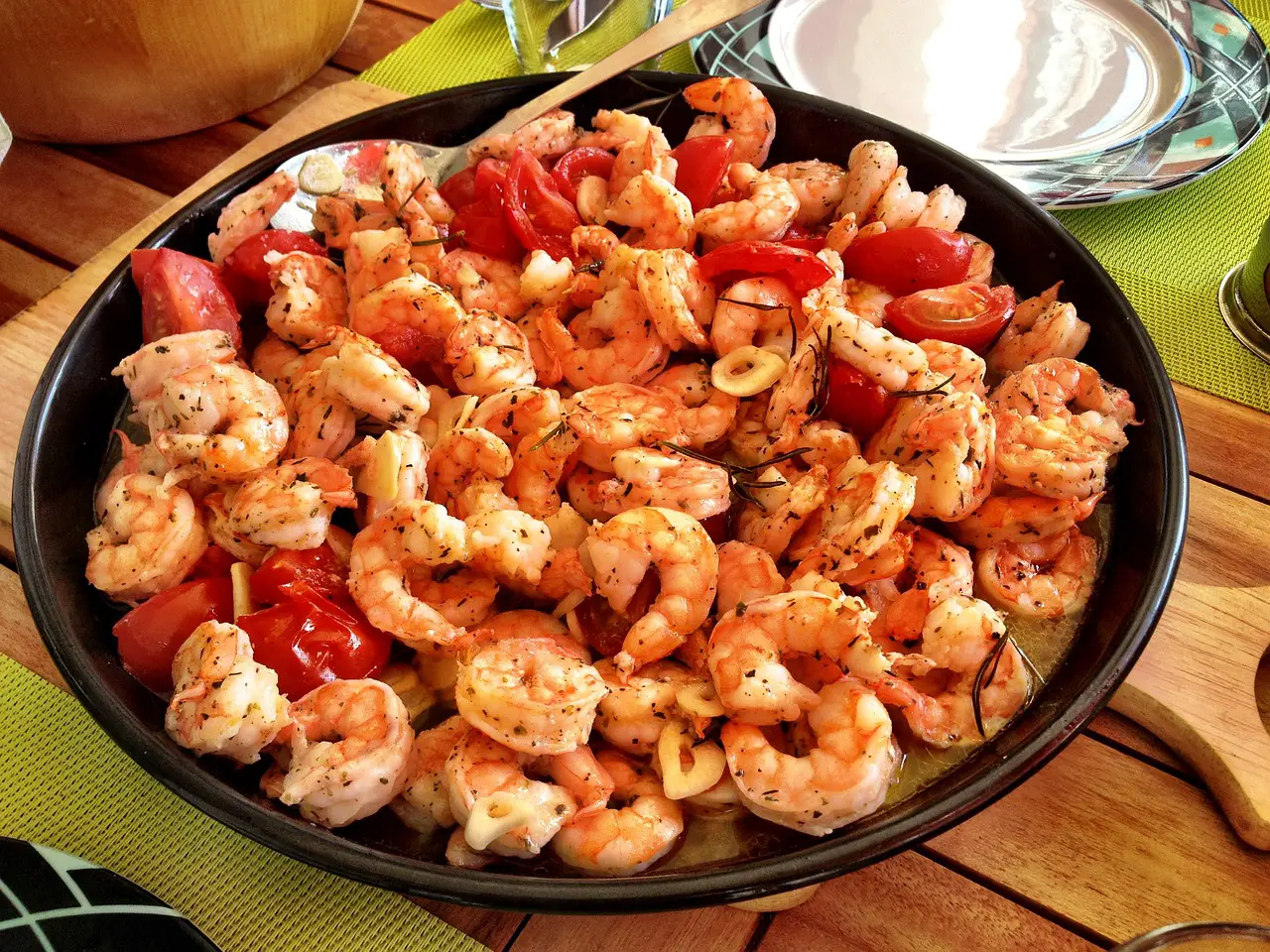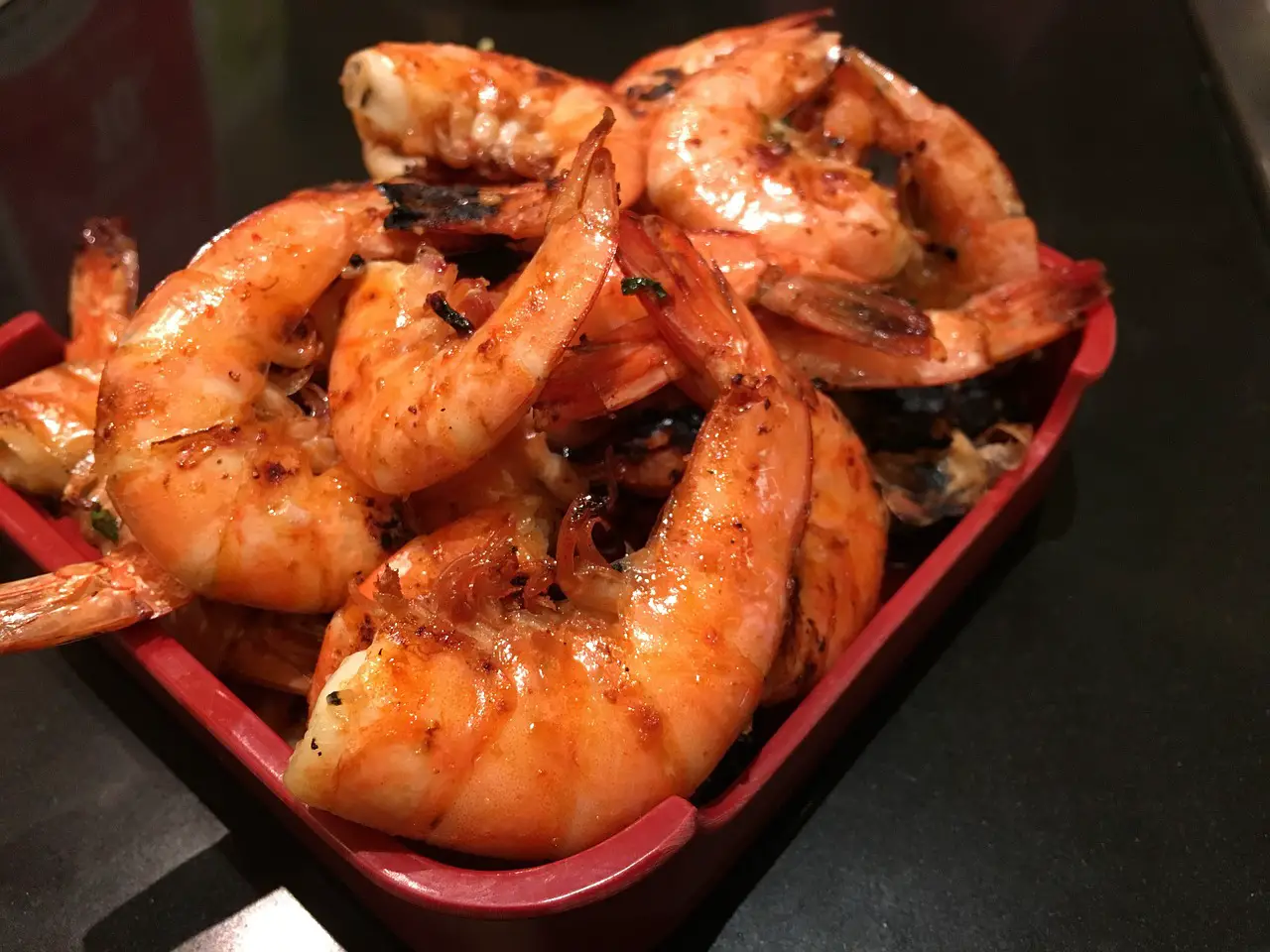If you’re thinking of freezing some of your cooked shrimp, you might wonder how to defrost it first. Defrosting cooked shrimp can be quick and easy, but it’s important to do it safely to avoid bacteria growth and ensure that the shrimp tastes fresh and delicious. Several methods for defrosting cooked shrimp include refrigerators, cold water, or microwaves.
In this article, we’ll explain the best methods for defrosting cooked shrimp and offer tips to ensure that your seafood is safe. Whether you plan to use the shrimp in a salad, stir-fry, or cocktail, we’ve covered you. Just follow these simple steps, and you’ll have perfectly defrosted shrimp.

How to Defrost Cooked Shrimp?
Suppose you’re looking for a quick and easy way to use leftover frozen shrimp. This can be a tasty addition to salads and fajitas. You can also add them to the cocktail sauce. The first step is to defrost the shrimp. This can be done in the refrigerator or microwave. You can also thaw frozen shrimp by placing them in a bowl of cold water. It is critical not to leave them out for too long.
After the shrimp have thawed, please place them in a zip-lock bag and re-freeze them for later use. The date the shrimp were frozen should be labeled on the freezer bag. To prevent overcooking, this will aid in spreading the heat. It’s important to remember that larger shrimp will take longer to defrost than tiny sizes. Otherwise, bacteria can grow and make them unsafe to eat.
Method 1. Using the Refrigerator for Defrosting Cooked Shrimp
Refrigerating cooked shrimp is a safe and efficient way to thaw seafood. Defrosting cooked shrimp in the refrigerator takes patience, but it’s the best way to keep the shrimp’s quality and flavor. You can enjoy perfectly defrosted, flavorful shrimp anytime. It is critical to defrost shrimp properly to avoid bacterial growth and food poisoning. Here’s how to defrost cooked shrimp in the refrigerator:
- Start by removing the cooked shrimp from the freezer and discard any packaging or wrapping.
- Transfer the frozen shrimp to a dish or container safe for the refrigerator. Make sure to choose a large enough dish to hold the shrimp in a single layer, as this will help them defrost more evenly.
- Place the frozen shrimp dish in the refrigerator and let it thaw slowly for a few hours or overnight.
- As the shrimp defrost, they will release some liquid. This is normal and is simply the result of the ice crystals melting. To prevent the shrimp from becoming waterlogged, it’s a good idea to drain off the liquid periodically.
- Once fully defrosted, the shrimp are ready to cook or use in your recipe. If you don’t use the shrimp immediately, you can keep them in the fridge for approximately two days.
Method 2. Using Cold Water for Defrosting Cooked Shrimp
Defrosting cooked shrimp in cold water is a fast and effective way to thaw seafood. Following these simple steps, you can enjoy perfectly defrosted, flavorful shrimp anytime. Just be sure to use cold water, not hot water, as hot water can cause the shrimp to become overcooked and rubbery.
Defrosting cooked shrimp in cold water is a fast and efficient method, but it’s important to ensure that the water is cold to prevent bacterial growth.
- Remove the cooked shrimp from the freezer and throw away any packaging. Here’s how to defrost cooked shrimp in cold water:
- Run cold water over the cooked frozen shrimp for a short while in a colander or strainer. Alternatively, put the shrimp in a dish of ice water.
- If you’re using a bowl of cold water, replace it every 30 minutes to keep it chilly. The cooked shrimp will defrost faster and more uniformly as a result.
- The defrosted cooked shrimp will release some liquid as they thaw. Said the melting of ice crystals is what causes this typical occurrence. It’s wise to occasionally remove the liquid to keep the shrimp from getting soggy.
- The defrosted cooked shrimp are prepared to cook or include in your dish after completely defrosting. The cooked shrimp can be kept for up to two days in the refrigerator if you don’t want to use them immediately.
Method 3. Using the Microwave for Defrosting Cooked Shrimp
It is quick, easy, and secure to microwave-defrost cooked shrimp. However, microwave defrosting is a delicate procedure, so be careful not to overcook. Additionally, bear in mind that shrimp are delicate to temperature variations. To avoid overcooking your shrimp, it’s crucial to check them frequently. If you must defrost the cooked shrimp in the microwave, do so with caution by following these steps:
- Remove the cooked shrimp from the freezer and discard any packaging.
- Put the frozen shrimp on a platter that can go in the microwave.
- The “defrost” setting or 50% power on the microwave.
- The shrimp should be defrosted for 30 seconds, checked for doneness, and turned over after each interval.
- The shrimp are prepared to be cooked or used in your recipe once fully defrosted. The shrimp can be kept in the fridge for up to two days if you want to wait to consume them.
It’s important to note that defrosting cooked shrimp in the microwave can cause the shrimp to become overcooked and rubbery, so it’s generally not the best method. Instead, using the refrigerator or cold water to defrost shrimp is better.
Can you Freeze Cooked Shrimp?
Freezing is an ideal way to extend the shelf life of cooked shrimp. Whether you want to cook shrimp for a party or to eat a few pounds over the next few days, freezing is a simple way to keep the food fresh. Freezing shrimp can extend its shelf life by up to six months.
Regardless of the container, you use to freeze your cooked shrimp, make sure to avoid air leaks. However, it would be best to be careful about how you freeze them. The best method is to use a heavy-duty freezer bag or container. Seal the bag or container tightly to keep the air out. This will keep your food safe and help it retain its taste.
You can safely store cooked shrimp for up to three to four days in the refrigerator. However, you should leave it out for up to two hours at a time. Leaving it out for a long period will grow bacteria and make it unsafe to eat. For extra protection, you can wrap the shrimp in aluminum foil.
Is it Safe to Eat Cooked Frozen Shrimp?
Yes, it is generally safe to eat cooked frozen shrimp. As long as the shrimp are handled and frozen properly, they should be safe to eat after being cooked. Frozen shrimp can be a convenient and cost-effective option for adding seafood to your meals.
Before cooking, it is important to thaw frozen shrimp properly, either in the refrigerator or using a safe thawing method. Frozen shrimp should be cooked to an internal temperature of 145°F to ensure that they are fully cooked and safe to eat. Avoid eating raw or undercooked shrimp to reduce the risk of food poisoning.
How can you Determine if Cooked Shrimp has Gone Bad?
It is better to throw away the cooked shrimp if you experience these symptoms. To avoid bacterial contamination and food poisoning, cooked shrimp must be handled and stored correctly. Always use proper food handling techniques to guarantee that the cooked shrimp you consume is healthy and fresh. There are a few signs that cooked shrimp may have gone bad:
- Odor: Cooked shrimp should have a mild, slightly sweet smell. If the shrimp have a strong, pungent, or rotten smell, they are likely no longer safe to eat.
- Texture: Cooked shrimp should have a firm, springy texture. If the shrimp are mushy or slimy, they may have started to spoil.
- Color: Cooked shrimp should have a pink or orange color. If the shrimp are grey or have black spots, they may have gone bad.
- Taste: Cooked shrimp should have a mild, slightly sweet taste. If the shrimp have a sour or off-taste, they may no longer be safe to eat.
How can Thawed Cooked Shrimp be Used in Recipes?
The leftover cooked, thawed shrimp makes a delicious lunch the next day. The USDA Food Safety and Inspection Service advise that any leftover food from a meal that has been sitting out at room temperature for more than two hours should normally be thrown away.
Reheat leftover shrimp to a minimum temperature of 165 degrees Fahrenheit to reduce the risk of harmful germs. You have a few options to consider when utilizing your frozen cooked shrimp. Choose one of these:
1. Shrimp Cocktail:
One of the greatest ways to use frozen cooked shrimp is in a traditional shrimp cocktail. Because the shrimp are the main attraction in this dish, you’ll need to get the best shrimp your budget will allow.
There are numerous cocktail sauce recipes, but it’s always a good idea to start with a store-bought version and add your spin to suit your preferences. Fresh horseradish, chopped cilantro, lemon juice, or finely minced fresh ginger are great places to start, but don’t be afraid to experiment with other ingredients.
2. Shrimp Salad:
Another option that uses frozen cooked shrimp that has already been thawed is the well-known shrimp roll. Along the whole East Coast, this shrimp roll is a beach-town staple. It is primarily shrimp salad served on a bun, with a little lettuce and tomato on occasion.
The thawed shrimp should be coarsely chopped before combining with mayonnaise, pickle relish, and a generous amount of fresh dills to form a delicious salad. Serve the shrimp salad with fresh green lettuce on buns, or wrap it in Boston lettuce.
3. Serve Hot Meals with it:
Another alternative to try with frozen cooked shrimp is to toss them into a pot of boiling pasta, although ideally, this should be done at the very last minute of cooking. After that, strain the pasta and shrimp together, and serve them with your preferred sauce. Frozen shrimp, for instance, can be a good complement to a fiery Asian stir fry.
Due to the shrimp’s pre-cooked state, you can add it to your dinner only before serving. Add the shrimp to ensure adequate heating in the final few minutes of cooking. The frozen shrimp can also be placed on top of an omelet with additional bearnaise sauce for a delightfully surprising brunch option.
Conclusion
Finally, cooked shrimp can be a delicious and nutritious addition to any meal. Cooked shrimp is a high-protein, low-fat source of seafood that can be enjoyed in various dishes, whether grilled, sautéed, or added to a salad or pasta dish.
You can enjoy this tasty seafood option confidently if you follow safe food handling practices and use fresh, high-quality shrimp. Properly handle and store cooked shrimp to avoid bacterial contamination and food poisoning.

